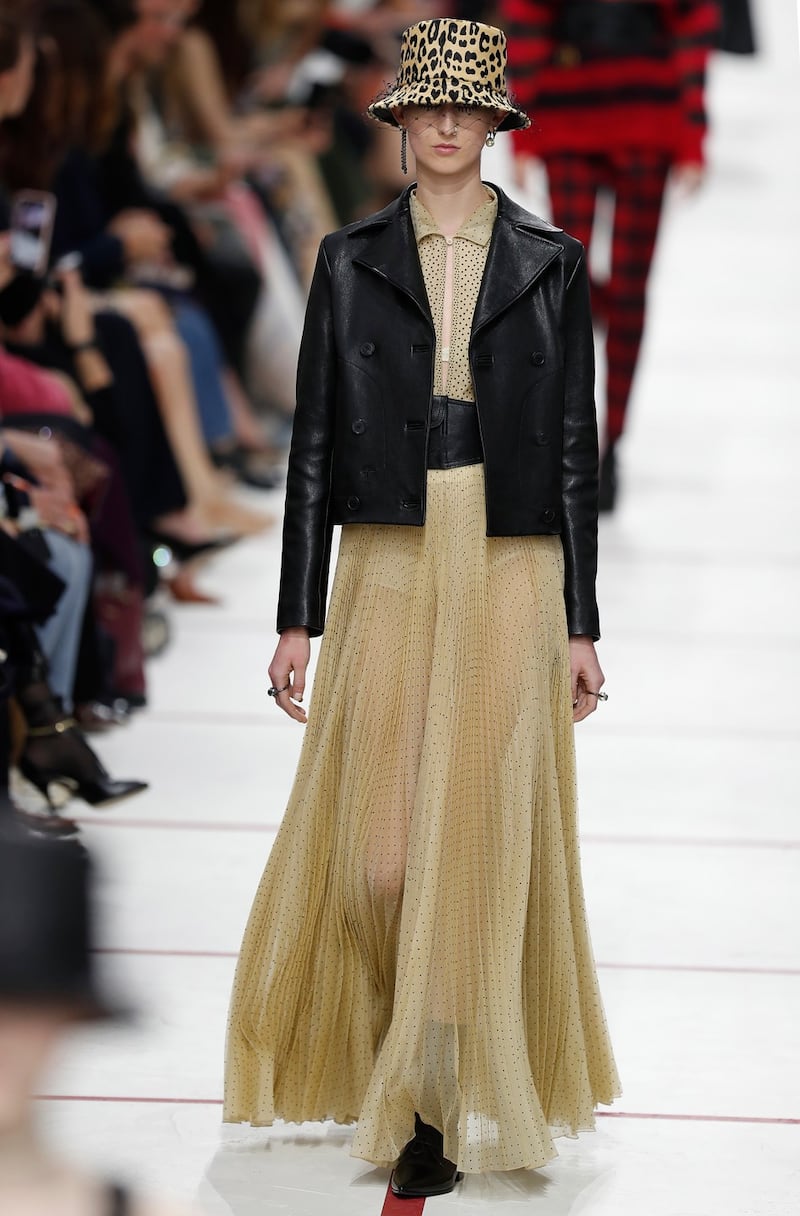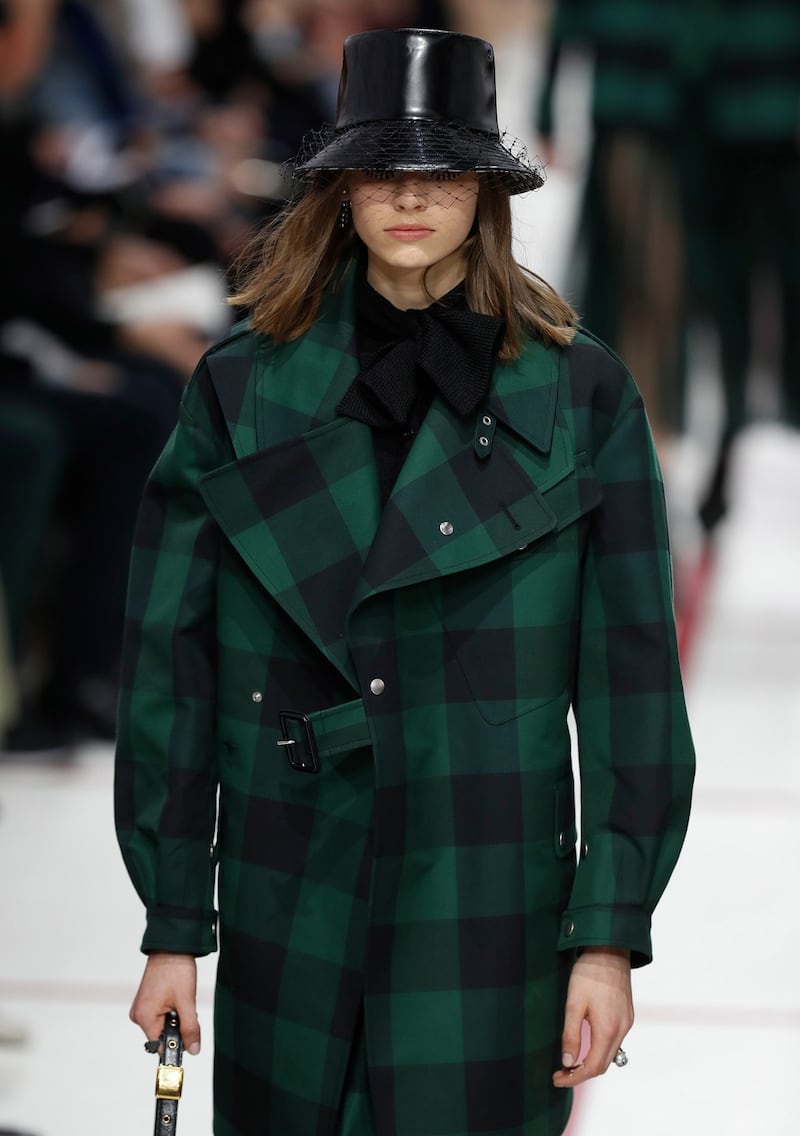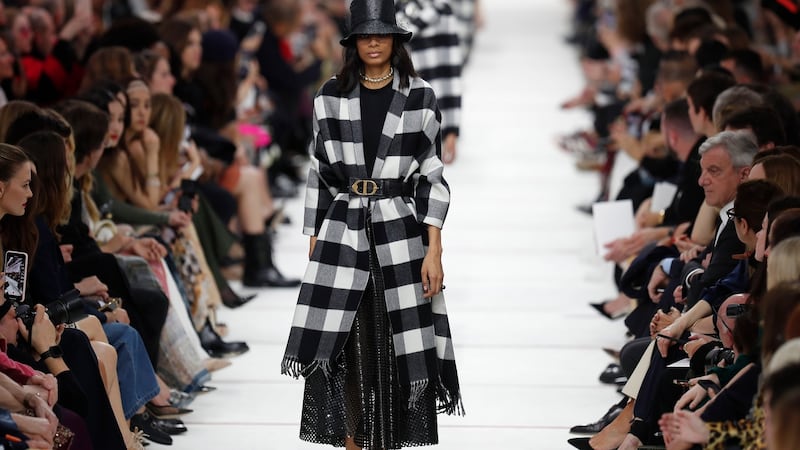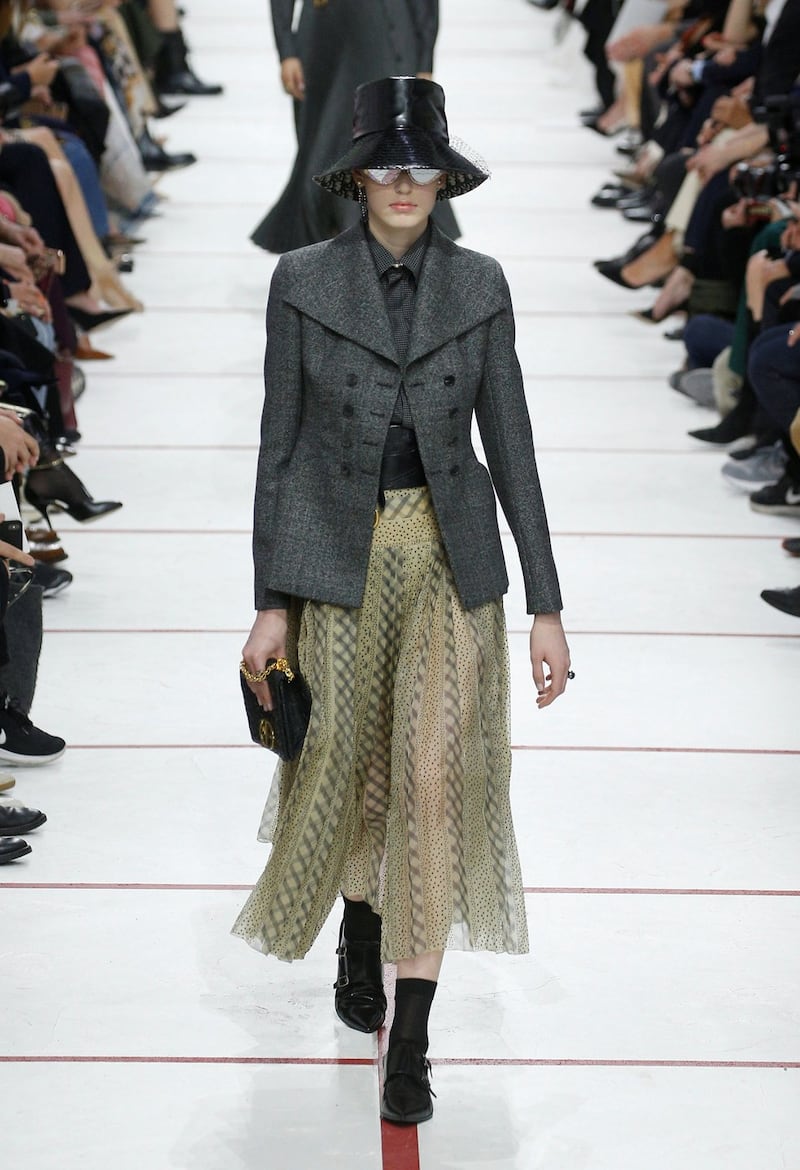The Dior show in Paris that traditionally opens fashion week flushes out the city’s beau monde, crowds of gawping spectators and bewildered tourists, generating huge traffic jams and police patrols.
In bright Parisian sunshine on Monday many guests arrived at the event at the Musée Rodin in head to toe Dior – ballet-length tulle skirts, sharp fitted jackets and kitten heels were everywhere.
Some were even decked out in furs, braving the unseasonably high temperatures, while Anna Wintour of Vogue sparkled in the front row in a brown-jewelled slim-fitting dress.
Celebrity guests included models Karlie Kloss and Cara Delevingne, actors Jennifer Lawrence, Gemma Arterton, Laura Carmichael, Freya Mavor and Jenna Coleman.


Since she arrived three years ago as creative head of the storied French house and the first female to hold the position, the Italian designer Maria Grazia Chiuri has refreshed the familiar codes of Dior, like Lagerfeld did for so long with those of Chanel – her autumn/winter ready-to-wear collection was a homage to him “the alchemist of elegance and beauty”.
Chiuri’s influence has been notable; she has put denim into the spotlight, made jumpsuits fashionable and her long ballerina skirts and flats have been widely copied.
A strong feminist sensibility informs everything she does, with t-shirts that read Sisterhood is Global, Sisterhood is Powerful, Sisterhood is Forever, borrowed from the literary works of American feminist poet Robin Morgan.
The set for the winter collection, a floor-to-ceiling visual photographic alphabet of nude women in various gymnastic poses, opened with a statement from its avant garde artist Tomaso Binga from Rome, who chose a masculine pseudonym as a way of parodying male privilege.
For winter, Chiuri, fascinated by the elegance and rebellion of English counter culture, revisited the 1950s and Teddy Girls – female counterpoints of the Teddy Boys, – working class teenage rebels, and young dandies proudly sporting Edwardian gear.
The result showed in the heavy use of lot of slim tartan or check trousers with oversize tweed hoodies, bold oversize check coats in green/black or black and white – cheeky confident looks for today.





The celebrated Bar, or Dior's hourglass figure-eight New Look of 1947 collection, was revisited in a more masculine way, with full-skirted or pleated grey flannel or with black t-shirts belted and buckled at the waist. The new way to wear a strapless tartan or lace dress, even a gingham bodysuit, is with a black t-shirt underneath – a modern mix of day and evening wear. Many full skirts glittered with delicate floral embroidery or sequins.
Black leather jackets, referencing Yves St Laurent for Dior and the French blousons noirs subculture from the 1950s and 1660s, made many appearances shrugged over those sculptural full skirts, some in black laser cut leather.
Chiuri has a powerful understanding of modern femininity’s mix of strength and fragility and it shows in the clothes and her desire to make them relevant and desirable for a new generation. Practical too; everything was worn with no-nonsense black bucket hats and low-heeled shoes cut low in the front. No stilletos here.
Interest in Dior has increased through Chiuri's success at the helm and most notably with the V & A's blockbuster show Christian Dior: Designer of Dreams curated by Irishwoman Oriole Cullen that continues to attract huge crowds daily in London.











